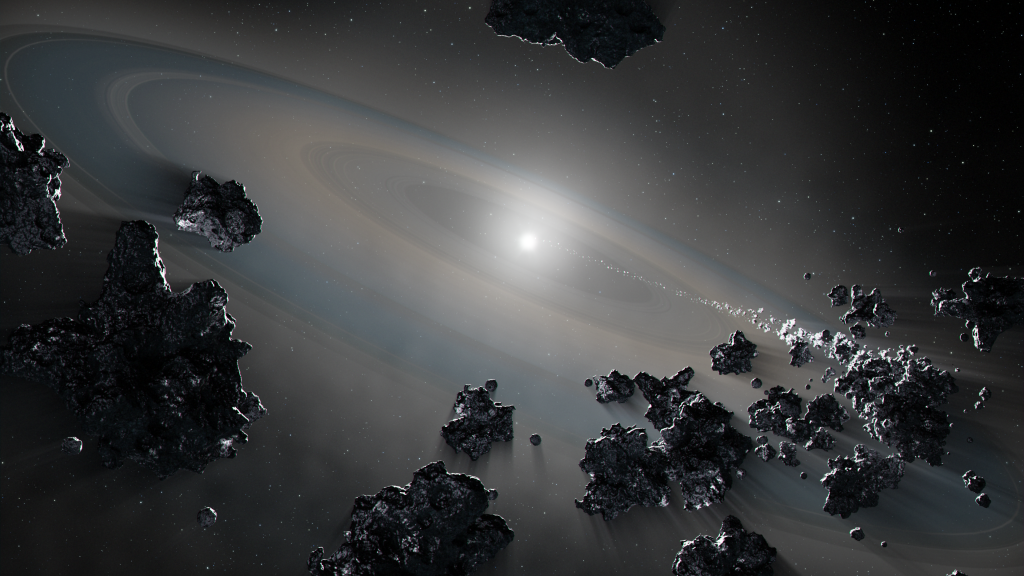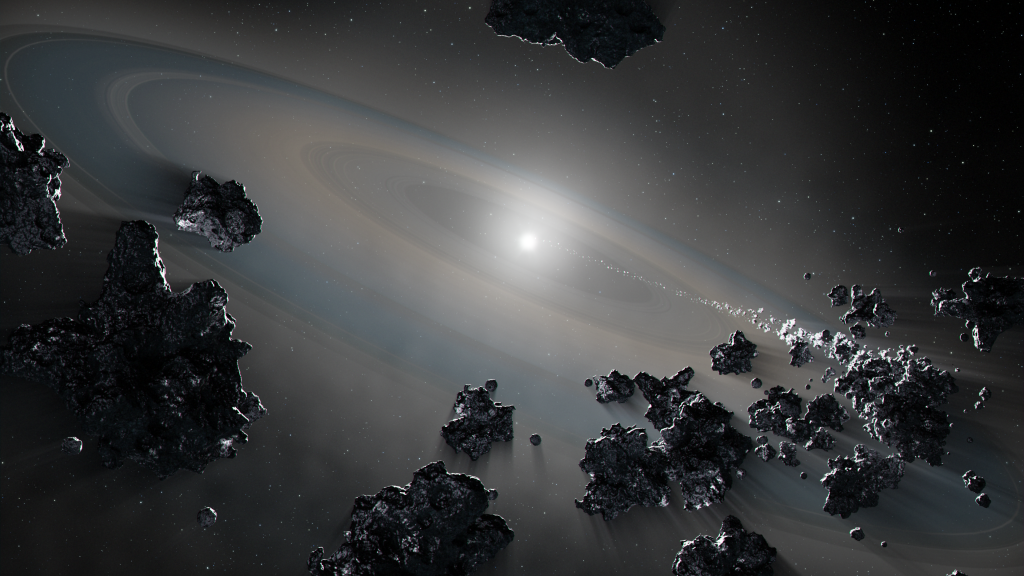Discovery challenges understanding of planetary system evolution
Media Contact: Meagan O’Shea
Maunakea, Hawaiʻi – Astronomers using data from the W. M. Keck Observatory on Maunakea in Hawaiʻi Island have identified a rare, ancient planetary system still being actively consumed by its central white dwarf star, LSPM J0207+3331.
Located 145 light-years from Earth, this system hosts the oldest and most heavy metal-rich debris disk ever observed around a hydrogen-rich white dwarf, raising new questions about the long-term stability of planetary systems billions of years after stellar death when fusion has ended in the star. The study, led by Érika Le Bourdais of the Trottier Institute for Research on Exoplanets at Université de Montréal, is published in The Astrophysical Journal.
“This discovery challenges our understanding of planetary system evolution,” said Le Bourdais. “Ongoing accretion at this stage suggests white dwarfs may also retain planetary remnants still undergoing dynamical changes.”
Spectroscopic data obtained using the High-Resolution Echelle Spectrometer (HIRES) instrument on Keck I revealed the white dwarf’s atmosphere is polluted with 13 chemical elements, evidence of a rocky body at least 120 miles wide (200 kilometers) that was torn apart by the star’s gravity.
“This is one of the very few times we can see direct evidence of planets being ripped apart and falling onto a dead star,” said Keck Observatory Chief Scientist John O’Meara. “We don’t have many of these systems where we see polluted white dwarfs. This particular system has the largest amount of heavy elements seen to date which proves it was an old, rocky planet.”
Hydrogen-rich atmospheres around white dwarfs typically mask such elemental signatures, making this detection especially significant. “Something clearly disturbed this system long after the star’s death,” said co-investigator John Debes of the Space Telescope Science Institute in Baltimore, Maryland. “There’s still a reservoir of material capable of polluting the white dwarf, even after billions of years.”
 This artist’s illustration shows a 3-billion-year-old white dwarf star accreting material from the remnants of its former planetary system. Gravitational instabilities caused a surviving planet to spiral inward and disintegrate under intense tidal forces, forming a debris disk. Spectroscopic analysis of the white dwarf’s atmosphere revealed the presence of this planetary debris. Credit: NASA, ESA, Joseph Olmsted (STScI).
This artist’s illustration shows a 3-billion-year-old white dwarf star accreting material from the remnants of its former planetary system. Gravitational instabilities caused a surviving planet to spiral inward and disintegrate under intense tidal forces, forming a debris disk. Spectroscopic analysis of the white dwarf’s atmosphere revealed the presence of this planetary debris. Credit: NASA, ESA, Joseph Olmsted (STScI).
Why the Delay?
Nearly half of all polluted white dwarfs show signs of accreting heavy elements, indicating their planetary systems have been dynamically disturbed. In the case of LSPM J0207+3331, a recent perturbation— within the last few million years—probably sent a rocky planet spiraling inward.
“This suggests tidal disruption and accretion mechanisms remain active long after the main-sequence phase of a star’s life,” said Debes. “Mass loss during stellar evolution can destabilize orbits, affecting planets, comets, and asteroids.”
The system may exemplify delayed instability, where multi-planet interactions gradually destabilize orbits over billions of years. “This could point to long-term dynamical processes we don’t yet fully understand,” Debes added.
Searching for Outer Planets
Astronomers are now investigating what may have triggered the disruption. Surviving Jupiter-sized planets could be responsible but are difficult to detect due to their separation from the white dwarf and low temperatures. Data from European Space Agency’s Gaia space telescope may be sensitive enough to detect such planets through their gravitational influence on the white dwarf.
NASA’s James Webb Space Telescope could also provide insights by taking infrared observations of the system for signs of outer planets. “Future observations may help distinguish between a planetary shakeup or the gravitational effect of a stellar close encounter with the white dwarf,” said Debes.
Related Links:
ABOUT HIRES
The High-Resolution Echelle Spectrometer (HIRES) produces spectra of single objects at very high spectral resolution, yet covering a wide wavelength range. It does this by separating the light into many “stripes” of spectra stacked across a mosaic of three large CCD detectors. HIRES is famous for finding exoplanets. Astronomers also use HIRES to study important astrophysical phenomena like distant galaxies and quasars, and find cosmological clues about the structure of the early universe, just after the Big Bang.
